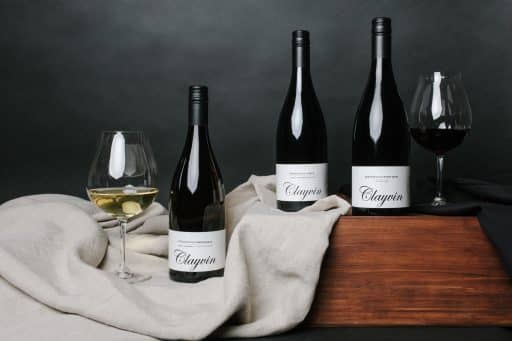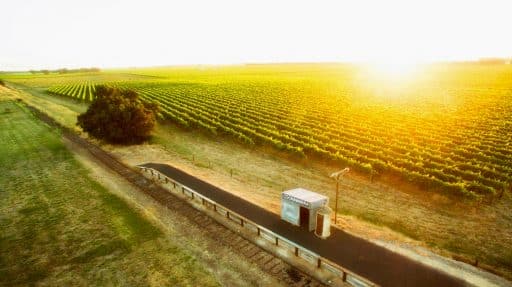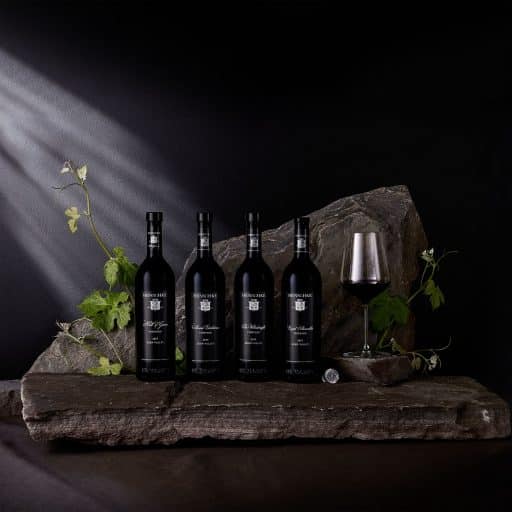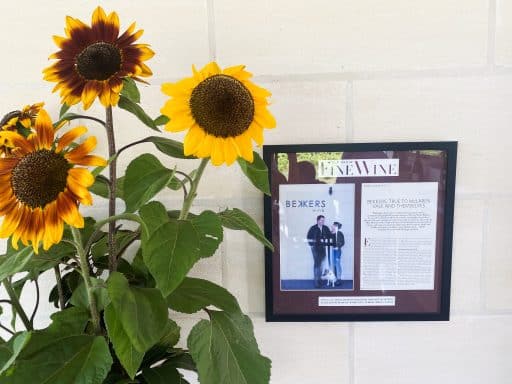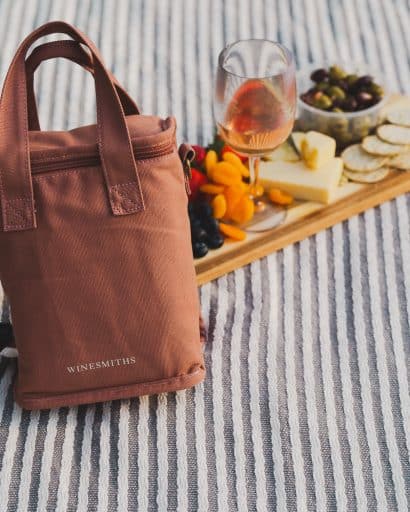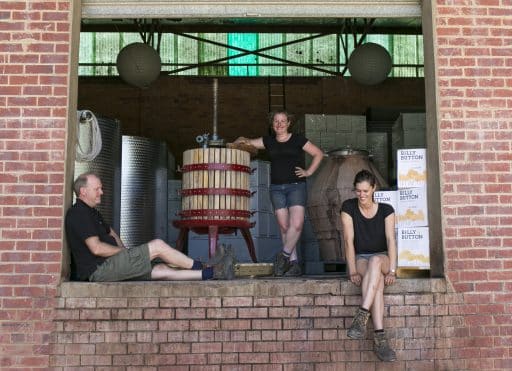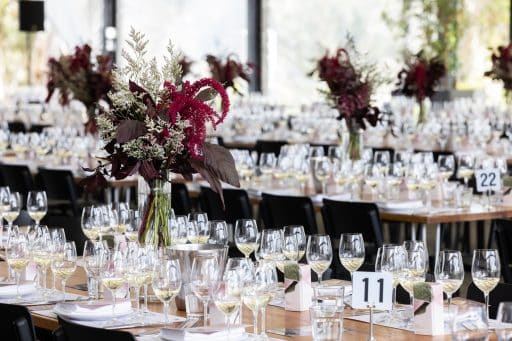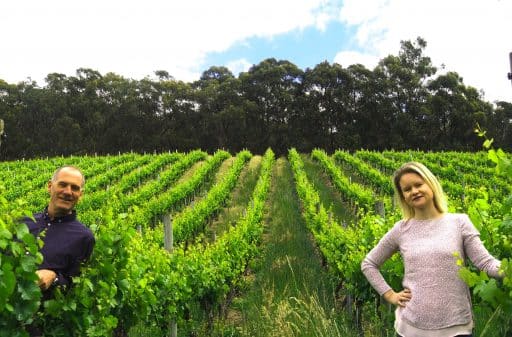Ben Ranken is a patient man. He’s also obviously a fan of trying something new. These qualities are needed for taking on a task such as maturing a wine underwater for five years. A Macedon Ranges winemaker based at Wilimee, a small, family-run property north of Melbourne, Ben and wife Sally focus mainly on Chardonnay and Pinot Noir, which are grown at an altitude of around 600m, planted in 1982. In September 2021, Ben released a 2015 Pinot Noir which had been aged underwater for five years – and I was lucky enough to try it.
While a little wine has been aged underwater by accident, such as after a ship has sunk, taking its precious vinous cargo to the depths of the ocean, purposely ageing wine underwater is still a relatively rare occurrence. When 168 bottles of Champagne were found in the Baltic Sea in 2010, including from venerable house Veuve Clicquot Ponsardin, their remarkable condition led to a surge in interest for aquatic maturation. The feat has since been attempted in Greece, Croatia, Chile and California, where winemakers have submerged their wines into the sea, often with much fanfare and inflated prices.
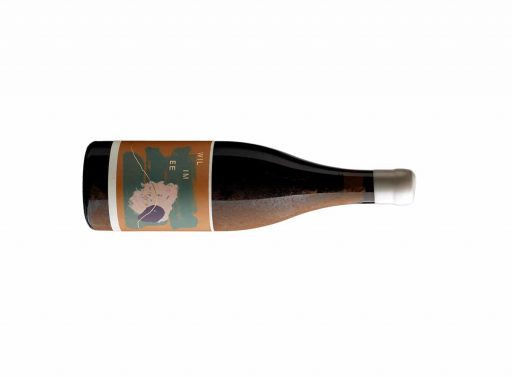
As far as I could tell from my own research, ageing wine underwater has only been tackled a handful of times in Australia: by Dominique Portet in the Yarra Valley, who submerged an entire barrel of wine (rather than bottles) into a tank of freshwater in their winery; and Glenarty Road in Margaret River, who lowered their 2019 ‘Fathom’s Cuvée’ sparkling into the depths of Flinders Bay near Augusta. Ben, on the other hand, placed 240 bottles into a 5,000-litre steel tank on his property and then filled the rest of the tank with freshwater from the farm’s dam.
There are four main differences between maturing wine underwater compared to in air that Ben highlighted: a lack of light as the wine is enclosed in a sealed tank; no oxygen seeping in from the air; a constant temperature from the surrounding water; and the increased pressure from the water. As Ben explained in a recent podcast, the difference in pressure between the wine in the bottle and the water in the tank was likely slight and eventually levelled out a bit, as the wine only seeped about one millimetre into the cork, and it appeared that no water had actually entered the bottle (which is great when you see the mud-stained bottles).
I tried two of Ben’s 2015 Pinot Noirs concurrently, though each had spent the last few years quite differently. One was aged conventionally on land, exposed to the air via cork. The other, as explained above, had aged in a tank of water, also with a cork. Neither wine was waxed until after the five-year maturation had ended, in order to have similar conditions for comparison. For the sake of clarity, I shall refer to the conventionally aged Pinot as the ‘air Pinot’, and the water-aged Pinot as, well, the ‘underwater Pinot’.
In order to assess the wines under different situations, I did as scientific a study as my non-scientific brain could come up with. On the first night, I poured both wines into glasses, then left them to breathe for around two hours. Both were then tried on their own, and then with some biscuits and cheeses (a chèvre and a camembert). The bottles were then sealed with a Vacuvin and left in a cool, dark place for 24 hours. Both wines were then tried on their own again on the second night, and then during dinner (roast chicken and vegetables, with far too many roasted potatoes – oh boy).
What I found was interesting but probably not wholly unexpected – at least in terms of what Ben had found himself by sampling the wines each year since their submergence – but was actually different to what happened to wines submerged in salt water in the sea. That is, the underwater Pinot seemed younger, fruitier and fresher, to the point where, in a blind tasting, I might have guessed that it was three or even four years younger than the air Pinot. This difference was noted as soon as I smelt the wines for the first time, as the underwater Pinot had a bright and fruity nose, whereas the air Pinot’s aromas were a lot more muted and musty.
When sampled with food, both wines were very good, but the underwater Pinot had more complex aromas and flavours: black cherry, raspberry, mushroom, earth, bacon fat and some stemminess. The air Pinot had a slightly different aroma and flavour profile: raspberry, musk, mushroom, earth, and stemminess. The underwater Pinot seemed more sumptuous and silky on the palate, although both wines had lovely fruit sweetness when consumed with the cheese.
On the second night, the differences between the wines were a lot more noticeable, as the air Pinot became predominantly more savoury, while the underwater Pinot appeared fruitier. Both, however, tasted superb when paired with roast chicken and vegetables, although the underwater Pinot still had a bit of an edge over its sibling. My main takeaway from the tasting was that each wine improved when paired with food, which softened some of the edges and highlighted the fruit more.
Is the underwater ageing of wine a bit of a gimmick? Definitely. But did it add something to the Wilimee Pinot Noir? Certainly. It was fascinating to try two wines from the same vintage which, five years later, came across as two completely different wines. It’s not really up to me to decide whether this exercise is worth the time and expense (only Ben can answer that), but I enjoyed both wines immensely, particularly with food, which resulted in me giving them an extra half a point each. I think it would be interesting to taste the underwater Pinot against some of Ben’s younger wines; how does a 2015, underwater-aged Pinot – which seems younger than its actual age – compare to, say, a 2018 or 2019 Pinot? I’m happy to give it a try – for the sake of science, of course.
2015 Wilimee Pinot Noir ($60) – 92/100
2015 Wilimee ‘Underwater’ Pinot Noir ($140) – 95/100


